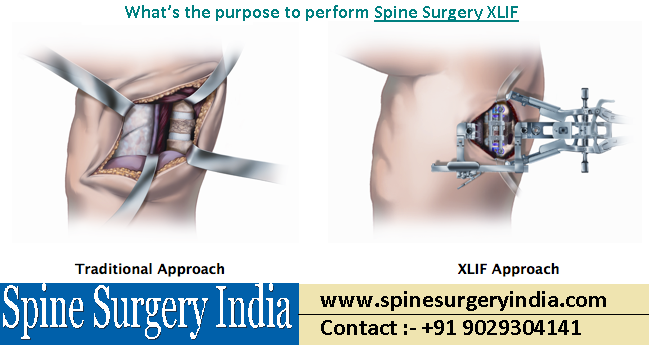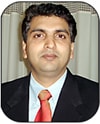
Spine Surgery XLIF (extreme lateral interbody fusion) is a minimally invasive procedure which is performed by highly skilled and trained spine surgeon through the side of the body from where the spine surgeons will treat spinal disorders and reduce long-term back or leg pain which is not responded with other treatments, such as steroid injections, physical therapy, and pain medication.
Spine Surgery XLIF is a procedure that differs from traditional procedures as this is a procedure in which the surgeons access the space between each spinal disc from the patient’s side, rather than accessing them from the front or back. The following are the advantages of XLIF surgery and these are:
a) Less time consuming: Spine Surgery XLIF is a procedure that can be completed in an hour and reduces the patient’s time staying under anesthesia.
b) Less scarring and blood loss: As this is a minimally invasive procedure which results in less tissue damage and reduced blood loss.
c) Less pain: Spine Surgery XLIF is a procedure in which the surgeons at Spine Surgery India will access the patient’s intervertebral disc space from the side due to which it will not disrupt sensitive back muscles, bones or ligaments. Many patients after Spine Surgery XLIF are able to walk on the same day.
d) Shorter hospital stays: There are cases in which patients need to stay only for an overnight in the hospital as compared to the hospital stay after traditional procedures.
e) Fastest recovery: There are patients who walk on the day off after the Spine Surgery XLIF, although the full recovery will take a few months as compared to six or more months for traditional procedures.
What are the conditions that can be treated by Spine Surgery XLIF?
The Spine Surgery XLIF treats the following lumbar and lower spine disorders such as:
- This surgery will treat adjacent level syndrome which is a condition that develops adjacent to the site of previous fusion surgery.
- The condition of degenerative scoliosis which is a right or left curvature of the spine can be treated with Spine Surgery XLIF.
- The instability of degenerative disc disease will be treated with the XLIF procedure.
- XLIF procedure is able to treat the posterior pseudoarthrosis which is a previous fusion surgery and did not fuse correctly.
- Recurring disc herniation can also be treated with the XLIF procedure.
- XLIF is a procedure that can treat the post-laminectomy syndrome which is the instability of the spine that occurs after previous non-fusion surgery.
How does the Spine Surgery XLIF procedure work?
During the time of Spine Surgery XLIF, the spine surgeons work in the patient areas which are close to their nerves on the spinal column. The spine surgeon uses electromyography to monitor and to prevent nerves from damage. Electromyography is a device that is used to provide the surgeons with real-time information about a patient’s nerve position.
Spine Surgery XLIF is a procedure which takes about an hour to complete and the surgeons will perform this procedure under general anesthesia where they make patient asleep. The following are the steps of the surgery:
- Once anesthesia starts working you are in sleep mode and the surgeon will make you positioned on your side. After that they will use an X-ray which allows the surgeon to locate the damaged disc, he/she will remove the disc and will use a marker to mark your skin above the disc.
- Your surgeon will then make a small incision towards your back and then they will their finger through this incision to protect the peritoneum (which is a sac that contains abdominal organs) as instruments and will pass through the lateral space to the spine.
- With the help of the first small incision, now your surgeon will make another incision on your side through which the instruments will pass and he/she is able to remove the herniated disc.
- Your surgeon will make use of special instruments which are tubular dilators and this will be inserted through the patient’s muscle on the side of the vertebrae. After that the X-rays and nerve monitoring guide instruments to the appropriate location and take away from nerves.
- Once your surgeon places the tubular dilators, a tissue retractor is also placed over them which helps in locking the surgical table and held open to stretch the small incisions which provide light and allow the instrument to access the disc space.
- Once the spinal disc visible your surgeon will remove the disc.
- After removing the disc, an implant is placed into the empty disc space which is latterly filled with bone graft for fusion.
- Your surgeon will conduct an X-ray image to ensure the implant is correctly placed and they will remove the retractor and also closes the small incisions with a few stitches.
- Additional support, such as screws, rods or plates, may be inserted to stabilize your spine for fusion but that will depend on your condition.
Related posts
Oct29
Feb05
May01
Oct01



















